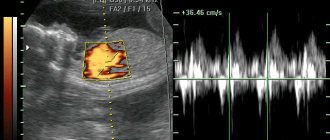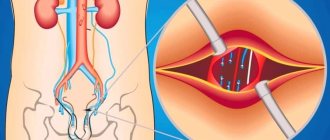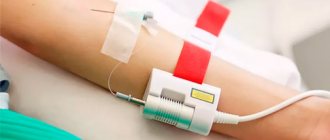home
/
Articles
/
How to install a urinary catheter and why you cannot install it yourself
A urinary catheter is a medical procedure that helps make urination easier. It is also used in the diagnosis and treatment of diseases. It is important to know how to properly install a catheter to avoid infection in the urinary tract.
What is catheterization
The content of the article
Catheterization is the process of inserting a urological catheter, a thin flexible tube connected to a reservoir. The tube allows urine to drain from the urinary tract. Most often, the device is inserted through the urethra into the bladder.
Catheter
It happens that the catheter needs to be inserted deeper into the ureters to cleanse the kidneys. In these cases, the device may not always be installed as described above. It is injected through the skin directly into the kidney or bladder (via the pubic symphysis).
Self-catheterization
A permanent catheter is associated with a high risk of infection, which increases within 48 hours after installation, even if the doctor followed all aseptic and antiseptic measures. Therefore, after a short period of continuous catheterization, patients are advised to switch to periodic self-catheterization - if this is not possible, a stoma is installed. Self-catheterization with lubricated catheters has lower risks than stoma placement: it reduces the number of episodes of infection requiring treatment. If both long-term methods of urinary diversion are not available, the patient may be left with an indwelling catheter. In this case, it is recommended to periodically clamp the tube under the supervision of a doctor - this is how the storage function of the bladder is trained.
Catheterization: indications
- The catheter should be placed first when urine is standing still, which can happen with benign prostatic hyperplasia or kidney stones.
- The device is used for perineal trauma, which leads to damage to the urethra. Before the organ heals, drainage is inserted through the abdominal wall directly into the bladder.
- Catheterization is also necessary after some operations on the genitourinary and gastrointestinal systems.
- The catheter is inserted into patients in a pharmacological coma.
- The device helps laboring women if they are unable to empty their bladder.
Bedridden patient with a catheter
In all these cases, the catheter is not inserted for long, since its presence contributes to urinary tract infections. But some patients need catheters permanently. For example, urine diversion is needed for people with a neurogenic bladder and neurological diseases.
Prevention
To prevent complications, the catheter installation site is inspected daily and the sutures are treated with antiseptics.
If blood leaks from their wounds, the bandages are changed without delay. To prevent infection, it is necessary to thoroughly rinse the catheter tubes with saline solution after each manipulation:
- administration of antibiotics;
- administration of nutrient solutions;
- administration of blood components.
After rinsing, a small amount of heparin-containing isotonic sodium chloride solution is injected into the tube.
When installing a catheter for a long time, it is recommended to apply a compress with thrombolytic ointments in the area of the puncture and 3-5 cm above it.
Catheterization procedure
For most people, catheterization involves inserting a drain through the urethra into the bladder. If the procedure is carried out correctly, everything will be done without injury.
The catheter is coated with a gel with gliding and anesthetic properties. This substance also has a bactericidal effect, which prevents urinary tract infections. The tube itself is sterile, but may allow bacteria to migrate (such as E. coli that accumulate around the anus).
Catheterization is easier in women because they have a short urethra. In men, the urethra is long and naturally narrowed in three places, therefore, in order not to damage it, this procedure should be performed only in a good clinic with a urologist.
Removal of the catheter is also painless. But the first urination can be quite unpleasant (may be accompanied by a burning sensation, mild pain). Incompetent, too aggressive procedure causes pain and can even damage the urethra.
Painful urination
The cause of discomfort and inflammation of this sensitive part of the urinary tract can also be a drainage diameter that is too large.
Features of catheter installation
This procedure significantly helps to avoid many urinary problems in patients, despite the fact that attaching a catheter is an unpleasant process. The installation must be carried out by a medical professional with experience, as this is a rather complex task that requires skills and practice.
There are certain differences in connecting the device for men and women. Installation of a urinary catheter requires complete sterility, so the procedure is performed using a disposable kit. By connecting the device to the bladder, fluid can continuously flow into the urine collection bag. Despite the similarity in the principle of catheter installation, the process is a little more difficult for men than for women.
Catheter placement in men
Before catheterization is performed, both the doctor and the patient should prepare for the procedure. The healthcare worker should wash their hands in three steps and put on new disposable gloves. After this, he prepares the necessary instruments, which have previously been sterilized. The installation process proceeds in the following sequence:
- The patient needs to relax and take a horizontal position.
- A specialist must disinfect the place where the device will be connected.
- Before performing the procedure, it is necessary to lubricate the connection site with a special gel or Vaseline oil to reduce pain in the patient.
- Checking the tightness of the device with a syringe is a prerequisite for installation.
- Connecting a device. To do this, the patient's penis is directed perpendicular to the body, and the catheter is inserted into the urethra. The device is installed correctly if urine appears in the tube. The fixation balloon is then filled and the foreskin is pulled down.
- The catheter is connected to a urinal.
Departure is paid separately - from 550 rubles
Request a call
Call:
+7 (499) 455-08-05
It is very important to perform all manipulations carefully. This will help the patient avoid acute pain. The medical worker is obliged to monitor the cleanliness of the catheter and the place where it is installed. The urine collection bag must be emptied every 8 hours.
Catheter placement in women
In the case when a woman needs bladder catheterization, the procedure is less painful and difficult, provided all the rules are followed. To connect the device, perform the following steps:
- Due to the peculiarities of the female reproductive system, it is necessary to carry out all hygiene procedures with high quality.
- The patient lies on her back and spreads her legs wide.
- The employee must treat the urethra with a special disinfectant solution.
- Injection of Vaseline oil or gel into the urethra.
- After checking the tightness of the balloon, the catheter is inserted 10-12 cm. Urine should appear, which will confirm the correctness of the procedure.
- Connecting the collection package to the entire system.
After completing the procedure, you should check the integrity of the entire system, and then periodically continue to monitor the operation of the catheter.
Catheterization: how to behave at home?
Most of us have seen patients in the hospital walking around with a bag of urine hanging on a stand. But in most cases they leave the hospital without it. However, sometimes the healing process after surgery or injury takes a long time, so patients are discharged home with a catheter. How do they live with it every day?
In principle, patients with a catheter can lead a normal life, that is, do light exercise, walk around the house, go for a walk or even go to work (the urine bag can be attached using special Velcro straps to the inner thigh).
Fixation of the catheter
However, if you have such a device, you need to get plenty of rest and remember to follow a few rules:
- First of all, you need to be careful with hygiene. Wash your hands thoroughly with soap and water before emptying the bladder or replacing it with a new one. It is also important to take care of intimate hygiene by washing the perineum and the outside of the catheter at least once a day with soap and water to prevent the migration of microorganisms into the urinary tract.
- For the same reason, you should not unnecessarily disconnect the bag from the drain hole.
- It is necessary to empty the urine bag regularly because urine is a good breeding ground for microorganisms.
- People with a catheter should drink more, preferably disinfectant herbal infusions, drinks rich in vitamin C, such as blackcurrant juice, cranberry juice. Low urine pH limits the growth of microbes.
Foley catheter care and replacement
Flushing the catheter is necessary because This is a reusable product. Before you start washing, you need to wash your hands with soap and treat them with antiseptics. Then:
- clean the outside of the catheter with alcohol, especially carefully walk around the place where the tube is connected to the catheter,
- disconnect the catheter from it and fill it with saline solution using a sterile syringe,
- drain the liquid into the prepared container.
The procedure must be repeated several times until the catheter is clear. Then connect it to the tube and put it in a sterile place.
Replacing the catheter is also important: it should be used no more than 5, maximum 7 days. You can only use silicone catheters for longer. The catheter is changed as follows:
- Be sure to wash your hands and treat them with antiseptic,
- remove the clamp and completely empty the catheter,
- place the patient on his back, legs should be spread and knees bent,
- when the patient relaxes, gradually remove the catheter, possibly using a special clamp to maintain sterility,
- be sure to ensure that the catheter remains intact.
Why and how to put
A catheter is installed exclusively as prescribed by a doctor in the following situations:
- the patient cannot empty himself;
- the bladder must be rinsed, medications administered or a test taken.
You cannot drain with a catheter if the urethral canal is damaged, there is a fresh injury, acute inflammation, or severe bleeding. Difficulty during administration is the narrowing due to chronic inflammation.
The procedure is performed with clean hands and gloves. First, the urethral area is treated with a swab containing a disinfectant solution. The end of the catheter is lubricated with sterile petroleum jelly and carefully moved inward, grasping with tweezers. The appearance of urine signals that the goal has been achieved. Stop advancing and lower the outer end of the tube into a reservoir to collect liquid.
Advantages of the model
Urological Foley catheters are sterilized with ethylene oxide, therefore, with one-time use, infection is excluded. The packaging is designed in such a way that you do not have to remove the catheter before insertion. In the line you can choose options with different lengths and sizes of the cylinder, and in order to quickly determine the size, they are equipped with multi-colored caps.
The smooth surface makes insertion easy and the large lateral openings ensure efficient drainage. The cylinder is durable, and the connector connects to urinals of various designs.
Contraindications to epicystostomy
There are relatively few contraindications to suprapubic catheterization:
- small bladder capacity (microcystis) - risk of unintentional damage to the intestines or blood vessels,
- malignant tumors of the bladder,
- active infection of the skin, urinary system,
- severe coagulopathies,
- osteomyelitis of the pubic bone.
Make an appointment
Make an appointment with a urologist by calling 8(812)952-99-95 or filling out the online form - the administrator will contact you to confirm your appointment
guarantees complete confidentiality
Showering with a catheter and urine bag
It is important to maintain good body hygiene by showering regularly. This reduces the risk of infection. Before standing under the stream of water, the urinal is disconnected and the catheter is clamped with a special clip. When washing, you should gently wash the genitals around the catheter using baby or liquid soap with a neutral pH.
After bathing, the catheter tube is carefully dried, the genitals are blotted with a soft cotton towel, and a clean urine bag is put on. You can swim every day, following these rules.
How to drain liquid from the receiver
The hose-reservoir system must not be allowed to depressurize, otherwise infection will enter the urethra and canal. Change the urinary reservoir as necessary, at least 2-3-4 times a day. There is no need to wait until the urine container is full. In the morning, after a shower, a foot version is installed. In the evening, change the foot tank to a night tank of larger volume.
Sequencing
Doctors recommend a proven algorithm for caring for a patient with an indwelling urinary catheter:
- With clean hands, drain the urine through the spout at the bottom of the tank without touching the walls of the toilet.
- Use a damp cloth to wipe the joint where leaks may occur.
- After draining, clamp the catheter with your fingers or a special clip.
- Then separate the receiver from the tube.
- Wipe the end of the tube with an alcohol wipe.
- Connect a new receiver.
- Remove the clamp from the catheter.
- Check if urine is flowing, if there are any clamps or bends in the hose, and if the connection is tight.
The disconnected urine collection bag should first be rinsed 3 times with cold water. Then pour a weak vinegar solution into the tank to disinfect and remove odor and leave for 15 minutes. Rinse again with cold running water, dry and leave until next use.
At night, it is convenient for the patient to place a clean plastic bucket next to the bed, covered on the inside with a garbage bag. Attach a night bag to the inside of this bucket. The main thing during care is that the urine reservoir hangs below the level of the bladder.
Possible complications
When monitoring a catheterized patient, they carefully monitor adverse events:
- The catheter falls out or is pulled out by the patient himself.
- Increased body temperature over 370C.
- A sharp change in color, smell, transparency, volume of urine discharge.
- Stopping urine output.
- Pain in the abdomen, back below the waist.
If you observe one of these signs, you should call a doctor. If all is well, then the doctor is scheduled to be contacted after 3 months of continuous wearing of the catheter to replace it.
When caring for a person with a urine drainage device, do not forget about the sensitivity of the problem. Such people are in dire need of tactful, restrained, skillful and respectful treatment.
What is a central venous catheter?
A central venous catheter (CVC) is installed on main, large veins and is used to connect to an infusion system or syringe.
Unlike peripheral catheters, which are installed on the saphenous veins, the manipulation of catheter installation is carried out in the projection of deep-lying large veins, such as the subclavian (under the collarbone), internal jugular (on the side of the neck), and femoral (in the groin).
Central venous catheters are widely used as long-term catheters for drug administration, blood collection, and parenteral nutrition. A subclavian venous catheter is installed for a period of no more than 3 weeks.
Installation of a venous catheter
The main indication for installing a central venous catheter is emergency conditions during resuscitation and intensive care, inaccessibility of peripheral veins, for the administration of intravenous nutrition, and during long-term intensive infusion therapy.
- Installation of a catheter for severe patients during long-term treatment in hospital and intensive care;
- Installation for administration of parenteral nutrition;
- If long-term administration of substances is necessary, for example, during chemotherapy in cancer patients;
- During planned and emergency operations, during transfusion of large volumes of solutions;
- A catheter is installed if the peripheral veins in the arms cannot be catheterized;
- For hemodialysis and hemofiltration;
- And others.
Contraindications
There are several contraindications for central venous catheterization.
- Inflammatory processes at the injection site;
- Blood clotting disorder;
- Thrombosis of the vein in which the catheter is planned to be installed;
- Clavicle injuries and bilateral pneumothorax (for subclavian access).
Complications
During and after installation of a CVC venous catheter, the following complications are possible:
- Pneumothorax and hemothorax - accumulation of air or blood in the pleural cavity;
- Hydrothorax is an accumulation of fluid in the pleural cavity;
- Catheter infection;
- Incorrect direction of the CVC, nerve damage;
- Puncture of arteries, lymphatic vessels;
- Irregular heart rhythm when advancing the catheter;
- Vein thrombosis and pulmonary embolism;
- Displacement of the subclavian catheter into the internal jugular vein.
Types of catheters
The choice of the optimal option for venous access is influenced by the duration of therapy, its frequency and regularity, requirements for system care, comfort for the patient and convenience for medical personnel, the volume of administered drugs, their physical properties, as well as the possibility of conducting infusion therapy in a hospital or on home.
Subclavian catheter. Inserting a catheter into the subclavian vein
Installation of a subclavian catheter is carried out only in a hospital setting, in the central vein, and is used in intensive care and intensive care settings if the catheter is expected to remain in the venous bed for more than 5 days. The maximum service life of the catheter with proper use is up to 3 weeks.
If there are no other contraindications, the catheter is installed in the subclavian vein. The choice of vein is based on the physiological characteristics and condition of the patient.
Implantable subcutaneous PORT systems
The port system, an implantable subcutaneous catheter, is inserted into a central vein and can be used for up to 5 years. The catheter can be 1 or 2 chambered, which allows you to administer 1-2 drugs simultaneously (alternately), mainly for chemotherapy or small volumes of drugs.
Main advantages of the port system
- The port system allows you to establish rapid venous access for the infusion of small volumes of drugs by slow infusion or blood sampling.
- The system provides painless repeated access for up to 5 years in cases of proper use and the absence of inflammatory phenomena.
- The port system does not create discomfort, is invisible, and allows you to lead a normal lifestyle.
- Infusion therapy through the port system requires placement of a Huber needle by a specialist, which requires replacement every 5-7 days.
- If the Huber needle is incorrectly inserted into the port of the system, the bottom of the port of the system may be injured, which can damage it.
The catheter port is a titanium reservoir, about 4 cm in diameter, 1 cm thick. A silicone membrane is installed on the top of the port, through which medications are infused with a special Huber needle. The port is placed under the skin, usually in the upper third of the chest.
The port system requires preventative flushing every 4-6 weeks through a Huber needle.
The oncology clinic uses more modern and easy-to-maintain analogs of port systems, such as Picc Line catheters with which the patient can be discharged home and undergo infusion therapy at home, as well as for relatives, caring for this type of catheter like Picc Line is very simple and does not require special knowledge.
Guardian Angel uses catheterization systems from the world's leading manufacturers; models differ in type, size, catheter length, and materials of manufacture.
To get a consultation
The installation price of the Picc Line single-lumen system is 35,000 rubles
The installation price of the Picc Line double-lumen system is 45,000 rubles
Implantable PICC systems (PICC)
The PIC venous catheter is an implantable catheter that is installed in a peripheral vein, which reduces possible complications to a minimum, in particular, eliminating the risk of thrombosis.
Can be used up to 6 months. The catheter can be 1, 2, 3 chamber. A PIC catheter, a silicone or polyurethane tube 45-65 cm long, may contain 1-3 isolated lumens. The distal end of the catheter may be open or have an anti-reflux valve.
Polyurethane catheters are advantageous when used in patients who require the administration of highly viscous solutions or large volumes of fluid.
Silicone catheters have higher biocompatibility and durability, are softer than polyurethane catheters, and better follow the contours of the vascular bed.
PIC catheters allow you to connect several cameras to the system, which is important for patients receiving several different drugs that are incompatible with each other at the same time.
PIC systems are installed by puncture through the medial saphenous vein of the arm. The installation procedure takes 10-30 minutes, it is simpler and safer compared to other types of devices.
It is advisable to implant PICC in patients
- Patients with tracheostomies, since they have a significantly increased risk of infection of the CVC in the area of the upper shoulder girdle;
- PICC implantation in patients with anatomical abnormalities of the neck and chest
Implantation of a PIC catheter through a peripheral vein eliminates the possibility of developing pneumothorax and hemothorax, injury to the jugular or subclavian artery.
The main advantages of the Picc Line catheter system
- The lifespan of the Picc Line catheter is 6 months.
- The Picc Line system allows you to establish rapid venous access for infusion of large volumes of drugs, blood sampling, and chemotherapy.
- Easy care of the Picc catheter for relatives, rinsing with saline once a week when the catheter is not in use, and during infusion therapy, rinsing after each infusion.
- The Picc Line catheter is installed in a peripheral vein, which reduces possible complications to a minimum, in particular, eliminating the risk of thrombosis. It also does not create discomfort and allows you to lead a normal lifestyle.
- Installation of the catheter is done quickly and painlessly.
- Picc Line catheter is a modern and easy-to-care analogue
- The catheter can be 1, 2, 3-chamber, which allows infusion of large volumes of various even incompatible drugs (for example, drugs for chemotherapy).
- The cost of a Picc Line catheter is several times lower than installing a Port system.
Oncology diagnostics
Emergency help
Innovations in symptomatic and palliative treatment of oncology at the Guardian Angel Clinic
CANCER. Stages, treatment, methods.











